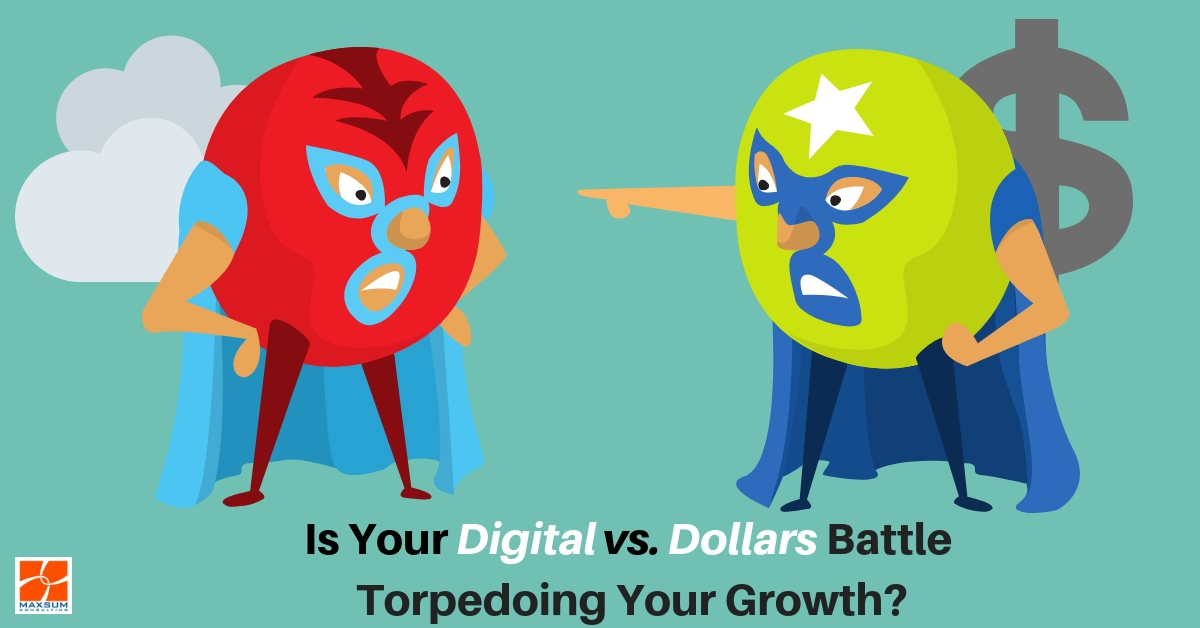Why CFO and CIO collaboration is critical to digital transformation success!
Something that’s high on the agenda for businesses wanting to transform and thrive in the digital age is to achieve greater IT-business alignment – the much-touted precondition of a successful digital transformation. But getting your finance and technology people in the same room together, much less aligned on your digital budget spend, is no mean feat! Nowhere are the battle lines more fiercely drawn than in the resource-tight boardrooms of our SMEs.
But looking to those who’ve successfully bridged the great divide, we can see some clear digital leaders emergent in our ecosystem today – organisations that are successfully and strategically adjusting, realigning, and pivoting their digital transformation efforts and are in it for the long haul. In stark contrast too are the obvious digital laggards – late comers to the digital party. But at some point these businesses, propelled by the need to stay relevant and/or ageing infrastructure suddenly rush to “catch up”, but end up jumping between purely technology-focused initiatives, distracted by the latest shiny new toy or sold on option x being the best way to cut costs. Their experience ends up being far from transformational – messy roll-outs, IT disaster stories and flat-out fails, firings and customer churn.
Successful company-wide digital transformation efforts are intrinsically linked to this concept of longer term, strategic IT-business alignment. To achieve this though, IT needs to be released from the constraints of being perceived merely as a “cost-center” where they report solely to finance, and integrated into broader strategic, operational and line-of-business conversations in your business. Heard that before? Your right! You have! That’s exactly what Maxsum’s seat-at-the-table approach is all about. Getting IT around your decision making table early and planning for more than just cost savings alone.
Why then are some organizations able to walk the walk towards digital success, while others talk the talk only to slow to a crawl?
Looking beyond the bottom line: If we’re not measuring cost savings, then what?
Let’s be honest, no one is in the business of investing in things that will ultimately cost more and make us less money, right? But in today’s changing digital workplace, this is an overly simplistic view of the state of play. Any case study of the digital transformation success stories involves a fundamental discussion around how they re-framed their view of IT as a cost centre. Yes, they surely had some initial wins and roadblocks as well, but they owned and acknowledged that the digital transformation pay-off is going to be a slow burn.
Make no mistake, this does NOT mean you don’t need to thinking about finding cost-effective, scalable and sustainable outcomes for IT investment. It just means that the conversation needs to be broader, longer term, involve stakeholders across the whole business and focus on much more than just achieving year-to-date budget wins!
Your CIO and CFO should also be planning and measuring:
- What benefits shifting IT costs from Capex to Opex will generate over time
- What productivity and thru-put wins are being generated for employees by new collaboration and mobility technologies
- What work-life balance gains the business is making by adopting digital workplace practices
- How IT security investments are mitigating new risks (and potential fines) facing every business
- How IT discussions around that decision-making table are empowering and informing bigger and bolder strategic planning in other areas of the business.
What digital transformation leaders are doing right!
In a recent Forbes Insights survey of digital transformation “leaders” (organisations that saw at least a 7% increase in sales and profits over the last year) – the success stories – are highly likely to view transformation as a strategic priority that supports overall business goals.
How did they get IT and finance on the same page? This is no easy feat in most organisations. Most business owners will tell you that IT and finance talk totally different languages. But these digital transformation leaders have actually managed to foster collaboration between their technology leads (CIOs) and financial decision makers (CFOs) and align the financial and technical skills necessary for IT transformation designed to support larger business goals.
Removing the pain points in CIO/CFO collaboration
Sometimes you have to experience what doesn’t work before you find out what will! In the same way, the transformation “laggards” canvassed in the same survey cited some pretty compelling examples of precisely what was holding their digital transformation efforts back!
- The CIO’s lack of business/finance expertise
- Confusion arising over traditional reporting structures (here’s IT sitting under finance again)
- Lack of a platform or real incentive for the CIO/CFO to work more closely together
- CFOs having wholly outdated attitudes about the role of the CIO.
“The finance team becomes a barrier if the discussions are only about the budget and how to run as lean as possible. That’s a losing attitude for IT Transformation. Conversely, barriers arise when the metrics used by the IT team to define success don’t have a financial underpinning. But once both sides can agree to give and take in both areas, they can develop a much more constructive relationship and ongoing dialogue.” KHOZEMA SHIPCHANDLER, GLOBAL CFO, GE DIGITAL
There’s more at stake than you realise!
Yes, we know – digital transformation is really a bit of a buzz word. But there are some very real downsides to not getting your finance and technology people collaborating on your overall digital journey. Even if you don’t know exactly what a successful digital transformation looks like for your business yet, here is what a non-aligned CIO/CFO relationship will definitely bring to the table.
- Increased risk of falling behind competitors
- Decisions about technology investments are not as timely or as accurate as possible
- The business struggles to scale as business demands change
- The business is slow to capitalise of technology innovation
- The business can’t roll out new products and services fast enough to satisfy current business demands
- The business can’t effectively integrate newly acquired customers and business
Getting out ahead of the competition, making agile technology and business decisions and investments, leveraging innovation, getting fast-to-market, and servicing customers better – This is what digital transformation is really all about.
There can be no doubt! Both your CFO and your CIO need permanent seats at the table, and what’s more – you should probably sit them together!
At Maxsum we take a seat-at-the-table approach by working with decision makers in organisations to build a business technology strategy that involves all arms of your organisation and generates real outcomes from business technology. Talk to us about undertaking a Business Technology Review to chart the best way forward for your organisation’s Digital Transformation Journey. Contact Us Now or call us today on 1300 628 786 (MAXSUM)


